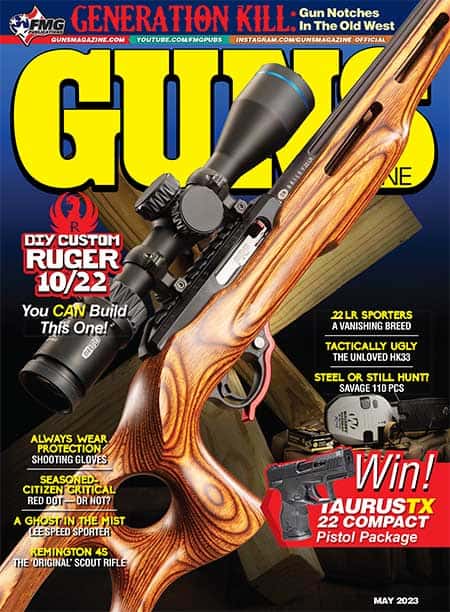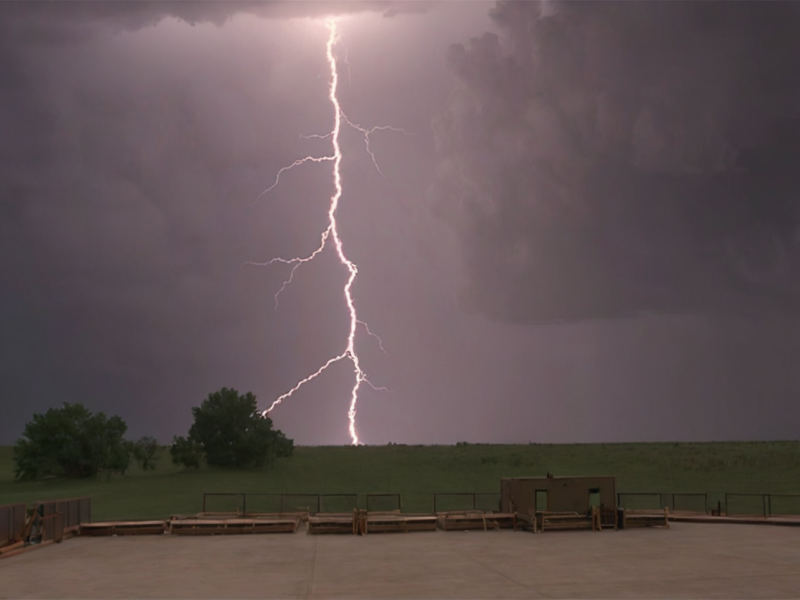A Purifying Ritual
Gun Cleaning — How Much Is Too Much?
“Do not fret because of the dirty chamber; do not be envious of those with a clean bore, for they will soon fade like the grass, and wither like a finished chore.”
Psalm 37(A) Mark II MOD 1 by Col. Townsend Whelen
Okay, I lied, straight up. I rewrote this Psalm because it seems fitting for those of us who have been through all the confusing permutations of firearms cleaning. Whether you’re a disciple of surgical cleanliness for all of your guns or habitually blow off even a cursory wipe down with an oily rag after spending a day in the rain, I understand — I’ve done it. Every bit of it.
The problem really lies in the “All or none”-nature of firearms advice. Pick any gun, caliber, bullet, powder, optic, holster — or cleaning technique — and it is either the best thing since the dawn of man or an affront to the laws of physics and common decency, depending on who you ask. There never seems to be a middle ground, especially now in our Tower of Babel-age where everyone has an opinion and by gosh, you’re gonna listen to it!
Back on topic, I’m sure somewhere, someplace there have been actual fisticuffs over the whole “commercially made versus old T-shirt cleaning patch” debate. Best brand of gun solvent? Forget it — the causes of World War I are far more straightforward and less contentious than this particular decision. In fact, there is a small group of historians who believe Arch-Duke Ferdinand actually precipitated the pandemonium of 1914 by publicly claiming corrosive primers “aren’t that bad.”
But it wasn’t always this way.
History
The earliest firearms, from matchlock until the dawn of the smokeless powder era, needed copious cleaning with hot water due to the corrosive nature of black powder. This was an iron-clad fact of life. In fact, many people don’t realize the whole Little Bighorn debacle might have been avoided if Gen. Custer hadn’t been such a stickler for army cleaning regulations. Some sources note Custer’s Native American moniker given to him by Sitting Bull loosely translates to “Curly-haired man who carries cleaning rod.”
Such a fanatical approach to gun maintenance was based on a simple observation — during the charcoal-burner age, if you didn’t clean your gun, you soon didn’t have a gun. I have tested this premise twice using hand-crafted percussion Hawken rifles. I’m not sure how quickly a bore can be damaged by black powder residue but I can verify a rifle sitting in the garage for six months after deer season will reliably grow the finest garden of red rust you could imagine. If you’ve ever seen the camera footage of a clogged sewer line, it’s far prettier than an uncleaned muzzleloader barrel in the corner of the garage. It’s even worse after 10 or so months.
As mentioned previously, I’ve performed this experiment twice.
Once smokeless powder became widely used, the need to clean went completely the other direction. After approximately 1890, things were simple — the proper authorities said you should scrub your gun after every use, and everyone listened to this advice then ignored it and went about their business. During the hardscrabble years when cartridge guns became mass-produced and cheaper, they were considered more a tool — like a hammer — and the idea of polishing your saw after every cut seemed somewhat ridiculous. Besides, cleaning supplies cost money and solvent didn’t grow on trees (it was harvested from certain species of unicorn) so even if a nimrod wanted to clean his or her gun, the challenges were significant.
This is why most of the “grandpappy” firearms in my own collection appear to be wholly uncontaminated by solvent or sullied by cleaning rod. Granted, they may look like Hell but otherwise, they don’t shoot very well either. Fortunately, I like the authentic patina comprised of gunk and crud accumulated by my forefathers. Then again, if they had cleaned it once or twice, I could have enjoyed accuracy too.
During this time frame there were still guys who religiously cleaned their guns, mostly military and law-enforcement types. However, even the majority of folks in those fields agreed with the admonition about keeping your firearms spotless — then promptly laughed and went about their business. In fact, I’d say people who kept their guns impeccably clean were regarded with a touch of suspicion by most shooters, like perhaps they were foreign spies or worse, benchrest shooters.
Eventually, it all began to change.
TheRise Of The Solvent Barons
About the time law enforcement switched from wheel guns to semi-autos was roughly when the world shifted from its laissez-faire attitude toward firearm cleanliness. As semi-autos are more sensitive toward snot, mucus and seaweed in the innards, there was suddenly an epiphany regarding gun cleaning. As with all good American trends, we took it too far.
I was a young pup of a cop during those days and I can remember the horrifying warnings about the danger of dirt and over-oiling. Suddenly, we were metering out lubrication in microscopic amounts and if someone had developed a device to dispense a single oil atom to each frame rail, we’d have bought three. In fact, the radicals advocated no lubrication whatsoever for a carry gun on the theory oil attracts dirt and dirt is the natural enemy of reliability. Thus, most serious gunners believed lubricating a firearm was tantamount to having a death wish. Of course, cleaning and lubing the gun on a more-regular basis could have solved the perceived problem, but why let facts and common sense get in the way of a good panic?
As maintenance overzealousness peaked, simultaneously and possibly coincidentally came a tidal wave of new gun cleaning products. In the old days you had multiple choices for gun cleaning solvents so long as it was Hoppes #9. Starting in the late 1980s, all sorts of secret soup and slop was being brought out to make your bores brighter and your slides slipperier.
Some of this stuff smelled so dangerous I’m sure I’ve got measurable chromosome damage just from handling the bottles. A few were so harsh they not only stripped the finish off the kitchen table but ate the wood itself and sometimes didn’t stop at the linoleum. Even with the window open, the smell alone would drive maggots off your garbage pail and send them marching down the street in lockstep like good little gun control advocates.
We also all got a little carried away with the idea of keeping the bore spotless. In fact, after I attended my first sniper school, I suffered a six-month period of clinical anxiety because I secretly believed a couple of my barrels had one or two copper molecules lurking somewhere in the bottom of a groove. If a cleaning patch didn’t come out of the muzzle neater than it went in, I felt it necessary to attend confession — and I’m not even Catholic.
And then things changed again.
Today
As I’ve often said, we’re living in the golden age of shooting. Most firearms on the market today have demonstrably better build quality than 20 years ago while gun cleaning necessities have reached a new level of technical sophistication. Attitudes are also seemingly more reasonable.
The new mantra seems to be “They’ll run dirty, but they won’t run dry.” With the plethora of high-tech oils on the market, just a few drops of the latest secret sauce and minimal cleaning keeps the old blaster running. Even for those seeking ultimate accuracy, we’ve collectively realized overly aggressive cleaning probably ruins more bores than it saves. All in all, it seems like things have reached a level of reasonableness I wouldn’t have imagined for the shooting world.
So, kids, tonight when you put your guns to bed, filthy but lubed, rest easy in the knowledge they’ll probably be fine.
Then again, you’re taking advice from somebody who was once wrestled to the ground after affixing a .30 caliber bore brush to a well-drilling rig.







